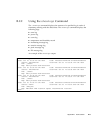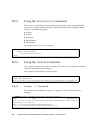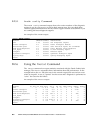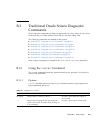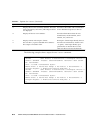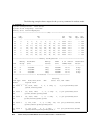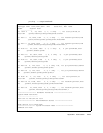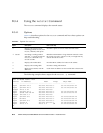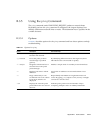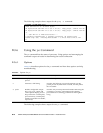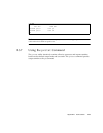
Appendix B Fault Isolation B-17
B.3.5 Using the ping Command
The ping command sends ICMP ECHO_REQUEST packets to network hosts.
Depending on how the ping command is configured, the output displayed can
identify troublesome network links or nodes. The destination host is specified in the
variable hostname.
B.3.5.1 Options
TABLE B-7 describes options for the ping command and how those options can help
troubleshooting.
TABLE B-7 Options for ping
Option Description How It Can Help
hostname The probe packet is sent to
hostname and returned.
Verifies that a host is active on the network.
-g hostname Forces the probe packet to
route through a specified
gateway.
By identifying different routes to the target host, those
individual routes can be tested for quality.
-i interface Designates which interface to
send and receive the probe
packet through.
Enables a simple check of secondary network interfaces.
-n Replaces host names with IP
addresses.
Used when an address is more beneficial than a host
name.
-s Pings continuously in one-
second intervals. Ctrl-C aborts.
Upon abort, statistics are
displayed.
Helps identify intermittent or long-duration network
events. By piping ping output to a file, activity overnight
can later be viewed at once.
-svR Displays the route the probe
packet followed in one-second
intervals.
Indicates probe packet route and number of hops.
Comparing multiple routes can identify bottlenecks.



